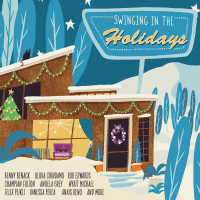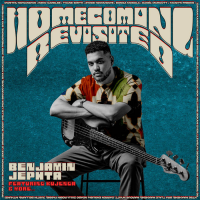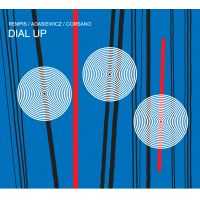Home » Jazz Articles » Album Review » Splinters: Inclusivity
Splinters: Inclusivity
The discs are housed in a 12" x 12" hardcover pack with a bound-in 34 page book, which is split more or less equally between contemporary photos of the musicians by the late Jak Kilby and an essay by specialist historian Simon Spillett.
The British jazz scene in the late 1960s and early 1970s was beset by external and internal threats. Externally, the overwhelming rise of rock culture meant there were fewer gigging opportunities for jazz musicians, as clubs and concert halls followed the money. Internally, the scene was becomingly increasingly divided, partly in response to the rock explosion and partly due to the passionate partisanships different jazz styles engendered. On a positive note, however, sections of the jazz community were fighting back against rock's economic onslaught through co-operative endeavours and pressure groups. There was also a newfound willingness among some musicians to bury their aesthetic differences, in recognition that there was more that united them than divided them. Splinters grew out of this belief.
All this is chronicled by Spillett in his extended essay. This draws on contemporary reviews and interviews, the memories and observations of musicians who were active in the early 1970s, and, crucially, the thoughts of the sole surviving member of Splinters, Trevor Watts. It is Watts, too, who we have to thank for the audio—two sets he recorded at the 100 Club on May 22 and a one-set performance at the Grass Roots on September 12. Sound quality is, aside from an occasional glitch, really good.
Splinters' style was "time no changes," an approach that was familiar to some members but less so to others. There were no rehearsals—the 100 Club performance was advertised as a "Jam Session" and the group only adopted the name Splinters shortly before the Grass Roots gig for publicity purposes—and no pre-composed material, let alone arrangements. The seven musicians simply got up on stage and, tentatively at first, started playing.
What we hear is not a cacophonous collective freak-out, but, for most of the time and at its best, a series of individual showcases (titled "Phases" after the event) featuring the individual frontline players over coursing motor rhythms from the two drummers. As a purely musical experience you probably had to be there, though with musicians of this calibre there is enough to engage one's interest five decades on. But what was most important about Splinters was the intention behind its formation, and Jazz In Britain is to be thanked for bringing this chunk of history into the public domain.
Track Listing
Disc One: Live At The 100 Club Set 1: Phase 1 – 5. Disc Two: Live At The 100 Club Set 2: Phase 6 – 8; Encore. Disc Three: Live At Grass Roots: Phase 1 – 6.
Personnel
Tubby Hayes
saxophone, tenorTrevor Watts
saxophoneKenny Wheeler
flugelhornStan Tracey
pianoJeff Clyne
bass, acousticPhil Seamen
drumsJohn Stevens
drumsAdditional Instrumentation
Tubby Hayes: tenor saxophone, flute; Trevor Watts: alto saxophone; Kenny Wheeler: trumpet, flugelhorn; Stan Tracey: piano (1-5, 10-16); Jeff Clyne: bass; Phil Seamen: drums (left channel); John Stevens: drums (right channel).
Album information
Title: Inclusivity | Year Released: 2021 | Record Label: Jazz In Britain
Tags
PREVIOUS / NEXT
Support All About Jazz
 All About Jazz has been a pillar of jazz since 1995, championing it as an art form and, more importantly, supporting the musicians who make it. Our enduring commitment has made "AAJ" one of the most culturally important websites of its kind, read by hundreds of thousands of fans, musicians and industry figures every month.
All About Jazz has been a pillar of jazz since 1995, championing it as an art form and, more importantly, supporting the musicians who make it. Our enduring commitment has made "AAJ" one of the most culturally important websites of its kind, read by hundreds of thousands of fans, musicians and industry figures every month.

































